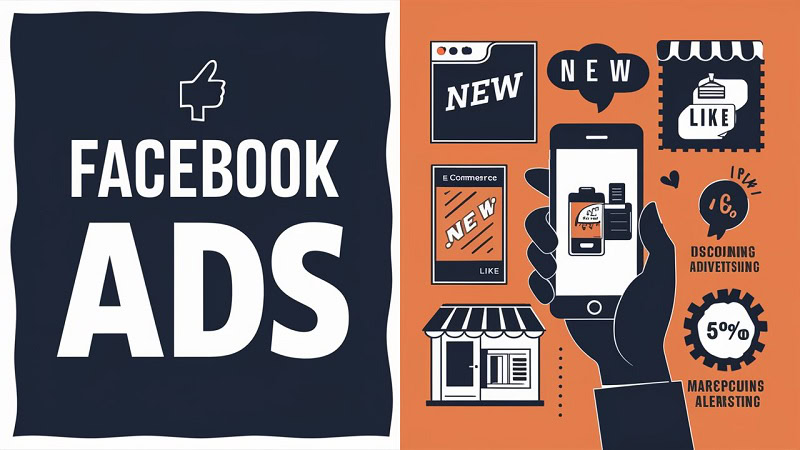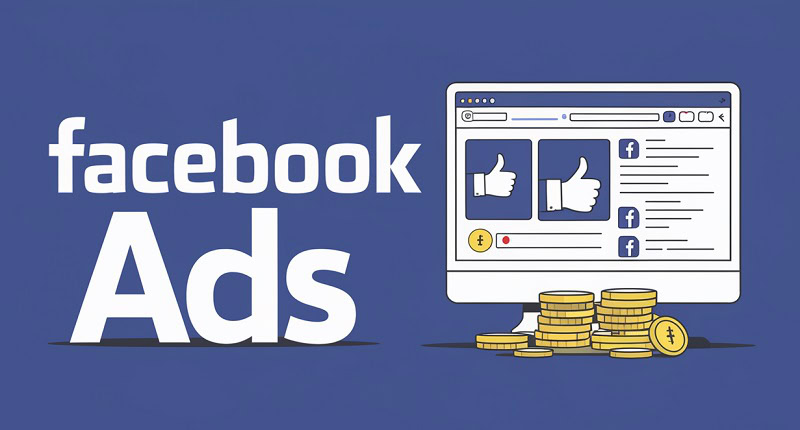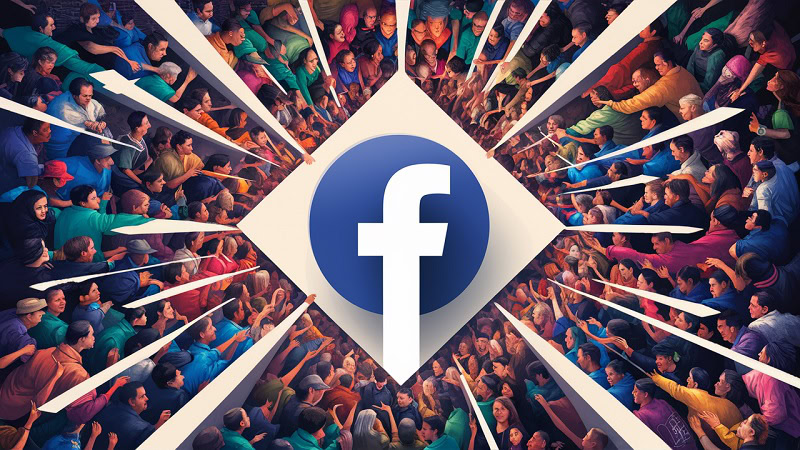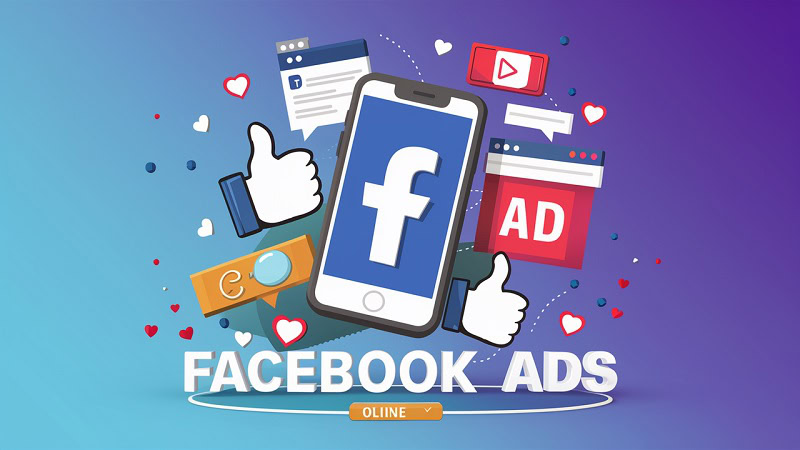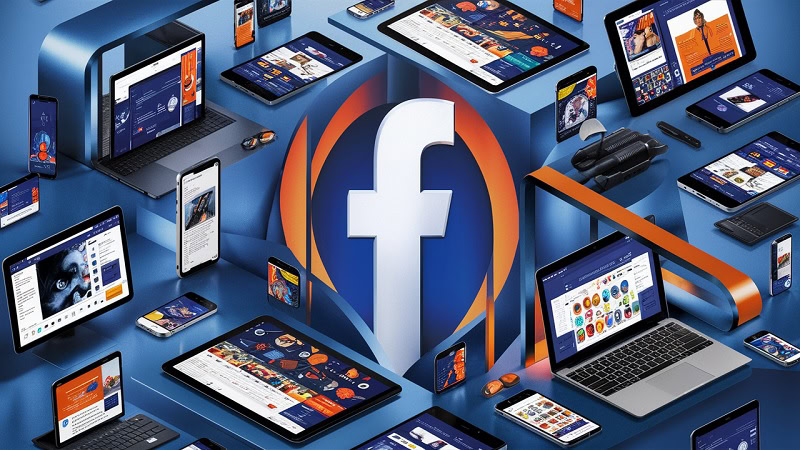
About author: Jack Evans brings his extensive experience in digital marketing to the table, specialising in paid social strategies that drive growth for e-commerce and DTC brands.
Facebook and Google.
Two behemoths in the world of digital marketing.
Both platforms offer a huge range of benefits and opportunities for advertisers, from advanced targeting tactics to creative ad formats.

Boost E-Commerce ROI: Download Our Free CPA & ROAS Calculator
But it can be tricky to know where to invest your hard-earned advertising budget.
Facebook and Google ads are both utilised by businesses around the globe, and both have the potential to deliver outstanding results.
So which platform is best for your brand marketing campaigns?
Well, it’s time to dive into the nitty gritty of both networks.
Let’s explore the strengths and weaknesses of Facebook ads and Google ads, and explain when you should choose one platform over the other – and when both can work in perfect harmony.
Find out more here if you’re looking for Tiktok ads, Facebook ads or Google ads services.
How do Facebook ads work?
Facebook ads fall into the category of paid social, which means that your ads are actively targeted and promoted across the Facebook social media network.
These placements can appear in multiple positions, from the main Facebook newsfeed to the Facebook Messenger inbox.
Different ad formats are often suited to different business objectives, so it’s important to focus on the placements that will effectively tackle your key goals.
Facebook ads work through an auction system, where marketers compete to deliver ads to their target audiences. Whenever you see an ad served on the platform, a real-time auction has taken place to determine the winner.
If you’re going to run cost-efficient Facebook ads, it’s vital that you wrap your head around this auction dynamic.
Although the size of your budget is important when it comes to the Facebook auction, it’s not the only factor to consider. The Facebook platform also rewards advertisers for running high-quality and engaging ad campaigns.
Your bidding approach, estimated action rates, and ad quality score will all contribute to your success in the auction. Action rates and ad quality combine to create Ad Relevance Diagnostics, which help you to understand how your ads are performing.
It’s critical to balance a healthy budget with ads that genuinely interest your audiences and drive consistent action.
How do Google ads work?
Google Ads, previously named Google AdWords, is a PPC (Pay Per Click) advertising platform.
These placements can be delivered across several online environments (e.g. Display Network, Paid Search, YouTube) and all run under the same PPC ads model.
So what does PPC actually mean for advertisers?
When you run ad campaigns across the Google network, you’ll only pay when a specific action or target is achieved. Advertisers will first establish their key objective, and then select a bidding strategy that aligns with this goal:
Cost Per Click (CPC) – paying for clicks on your Google ads.
Cost Per Mille (CPM) – paying for every 1,000 ad impressions.
Cost Per Engagement (CPE) – paying for specific user actions (e.g. video views).
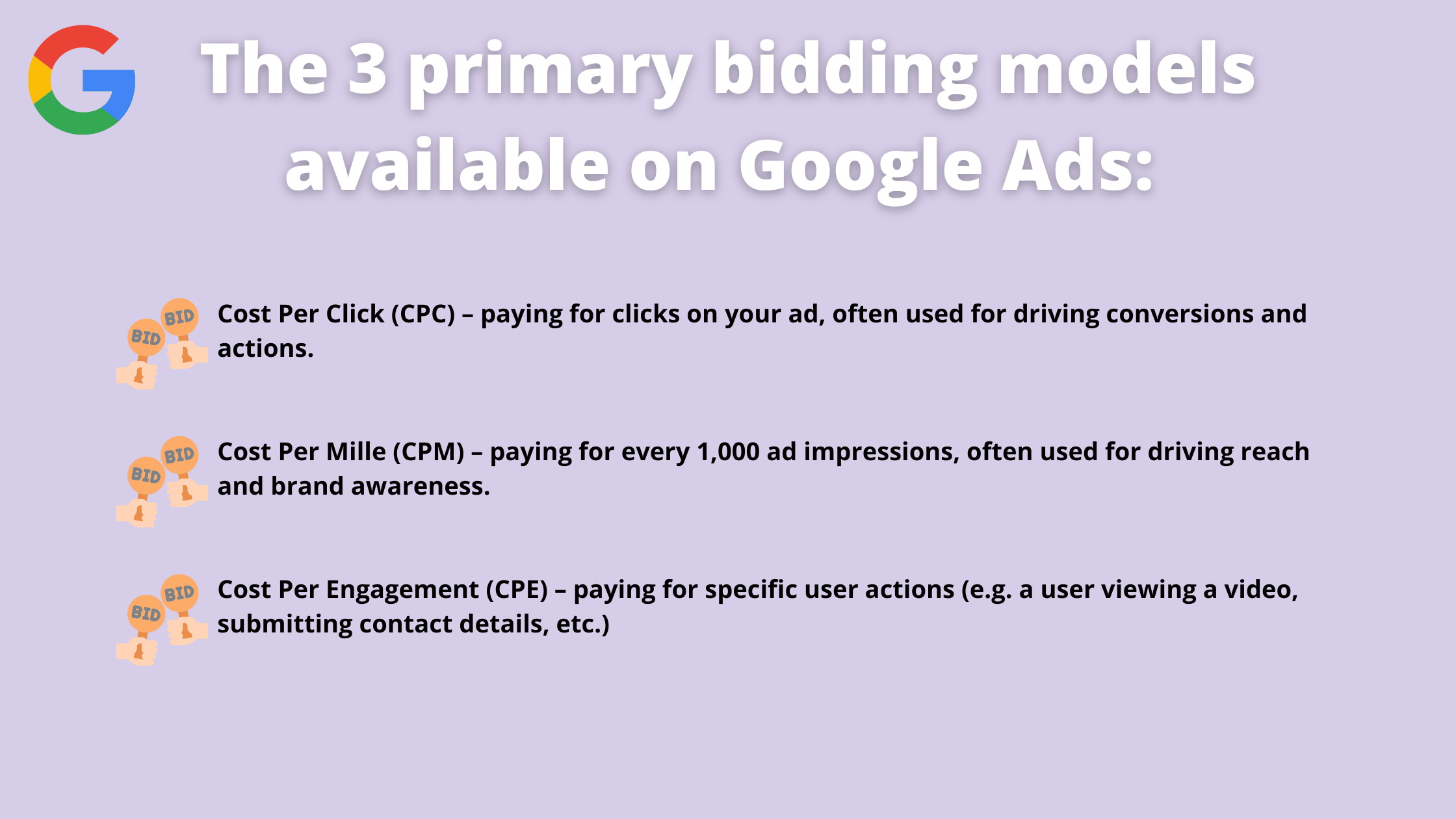
You’ll then need to set a campaign budget and bid against other advertisers for specific keywords.
If your bid is successful, your ad impression will be served. You can set a maximum bid for a specific action, or set a maximum daily budget for your campaigns. Setting up a cost-efficient Google bidding strategy is key to success.
In many ways, the Google Ads auction is similar to the Facebook system.
You’ll need to focus on a competitive bidding strategy, but you’ll also need to deliver high-quality ads to your audiences.
Your expected click through rate (CTR), ad relevance, and landing page experience all contribute to a total Quality Score. A superior Quality Score can reduce your advertising costs, enabling you to run more efficient campaigns.
What are the pros and cons of Google ads?
Google ads can deliver exceptional results for digital marketers – but no platform is perfect.
Let’s take a look at some of the pros and cons associated with the Google Ads platform.
Pro #1 – advertisers can unlock colossal scale
The Google platform is absolutely huge.
Like, mind-blowingly big.
In terms of user activity, Google processes more than 40,000 search queries every second, which equals over 3.5bn searches per day.
And since every search engine query represents a new advertising opportunity, it’s easy to see the immense marketing potential of the platform.
Plus, Google has over 4.3bn users worldwide, meaning you’re guaranteed to find profitable customers to reach, target, and convert.
Pro #2 – smaller brands can thrive with Google Ads
Although the Google Ads platform is highly competitive, that doesn’t mean that small brands can’t achieve their goals.
In fact, smaller advertisers can still launch incredibly efficient campaigns. They just need to use the right strategy.
By producing high-quality campaigns that are relevant and engaging for audiences, smaller businesses can rapidly increase their Google Quality Score. This enables brands to increase visibility and drive action while also reducing bidding costs.
A data-driven keyword strategy can also level the Google Ads playing field.
If smaller advertisers constantly optimise their keyword approach and focus on the best-performing terms, they can maximise the impact of their budget and stay competitive.
Pro #3 – prospects can be driven through the sales funnel
The sheer scale of Google Ads also allows advertisers to effectively tackle different areas of the sales funnel.
For example, if you’re looking to effectively build brand awareness, YouTube is the perfect environment. With an engaging video asset, you can reach a huge audience of prospects with accurate targeting and increase brand visibility.
New prospects visiting your website can then be retargeted with more sales-driven ads – for example, across the Google Display Network and Google Search.
With a smart Google Ads strategy, brands can build brand awareness, attract new customers, and achieve a high conversion rate – all within the same network.
Con #1 – Google Ads can take time to master
Google ads can achieve a huge amount for your brand. But that doesn’t mean that the platform is easy to master.
There can be a fairly steep learning curve associated with Google Ads, particularly if you have limited experience with PPC advertising.
Not only will it take time to learn how to set up and launch Google ads, but properly managing and optimising campaigns will also require a significant time investment.
Ads will need to be constantly reviewed, budgets will need to be adjusted, and campaigns will need to be monitored to maximise performance.
Although the results that Google Ads can drive definitely make the learning process worthwhile, you’ll still need to invest time and resources into exploring the platform and setting up campaigns!
What are the pros and cons of Facebook ads?
Facebook ads can be an invaluable tool in your paid social arsenal, but there are some key considerations to bear in mind.
Let’s take a look at the main strengths of Facebook advertising, as well as any potential drawbacks.
Pro #1 – brands can reach an enormous audience
Facebook is one of the biggest social networks on the planet, boasting around 2.9bn monthly active users.
Because of this impressive scale, advertisers can achieve huge reach through ad campaigns and target a large number of valuable prospects.
Whatever your target audience is, you’re almost guaranteed to find high-value customers on the Facebook platform. The size of the Facebook audience also means that marketers aren’t likely to run out of new customers.
Whether you’re looking to attract brand new buyers or re-engage existing customers, there are plenty of prospects available through Facebook advertising.
Pro #2 – advertisers can utilise advanced targeting
However, Facebook doesn’t just offer a huge user audience. It also provides brands with the tools they need to accurately target specific segments.
Facebook offers a wide range of effective ad targeting options, meaning brands can be as broad or as granular as they’d like with their campaigns.
Advertisers can target basic demographic segments that are based on locations, interests and behaviours. However, the platform also enables brands to create more advanced audiences that can deliver superior performance.
For example, marketers can build Custom Audiences using data from the Facebook pixel. These audiences allow brands to target recent site visitors, users who have engaged with ads, and individuals who have downloaded a specific app.
Since these audiences are built around real user data, they can drive incredible results and secure high volumes of valuable conversions. By using Lookalike Audiences, advertisers can also expand their reach further while maintaining a focus on quality users.
Pro #3 – the platform is affordable for smaller brands
Although many globally-established brands use Facebook advertising, that doesn’t mean smaller brands can’t thrive on the platform.
Facebook advertising is extremely accessible, even for marketers with a modest budget.
Advertisers can easily launch new ads with a very small test budget, and gather results and insights before ramping up spend.
Managing your Facebook budget is also simple. Ad spend caps can be placed on campaigns and specific bidding strategies can be set up to prevent any overspending or wasted budgets.
If you’re feeling intimidated by the scale of the Facebook platform, there’s no need to worry. Many smaller brands and start-ups achieve tremendous results through Facebook advertising – you just need a smart strategy that focuses on efficiency.
Con #1 – marketers are limited to the Facebook network
If you’re thinking about investing in Facebook ads, it’s important to remember that your campaigns will be limited to the Facebook platform.
This isn’t necessarily a bad thing, because the Facebook ads audience is enormous. You can also extend your marketing activity to Instagram.
However, it’s worth noting that you’ll only be reaching users within the Facebook network itself.
If you’re hoping to reach a wider audience of prospects across different online environments and websites, you may feel slightly restricted by using Facebook exclusively. Although you won’t struggle to achieve a strong reach on Facebook, you may want to diversify your targeting by using multiple networks.
What are the key differences between Google ads and Facebook ads?
Facebook and Google are both digital marketing powerhouses.
But how do these two platforms stack up against each other? What are their core strengths and potential weaknesses?
Let’s place these advertising giants head-to-head and examine how they compare in a few key areas.
Cost Comparison
Online advertising costs will always fluctuate on platforms like Facebook and Google.
Several external factors (e.g. seasonality, competitor activity, industry) will constantly influence prices, so it’s difficult to guarantee a fixed cost for a campaign.
However, we can take a look at some average costs to compare these two networks.
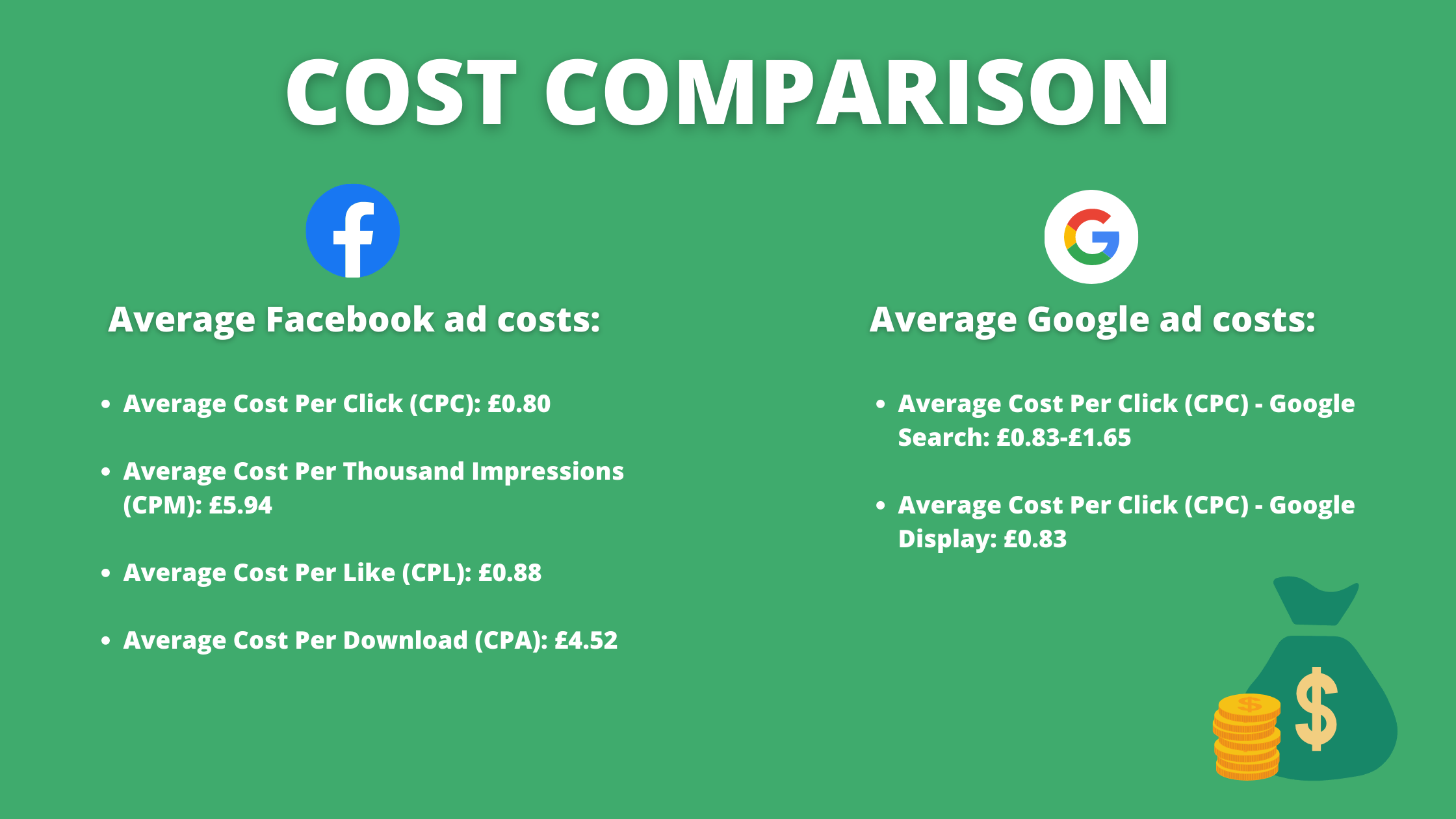
Average Facebook ad costs:
Average Cost Per Click (CPC): £0.80
Average Cost Per Thousand Impressions (CPM): £5.94
Average Cost Per Like (CPL): £0.88
Average Cost Per Download (CPA): £4.52
Average Google ad costs:
Average Cost Per Click (CPC) – Google Search: £0.83-£1.65
Average Cost Per Click (CPC) – Google Display: £0.83
Facebook is generally able to deliver a slightly cheaper CPC, but it’s crucial to remember that every campaign is different. Some industries will always be more expensive than others.
Proper campaign management will also help to reduce costs. For example, using the Google Keyword Planner can help you to estimate keyword costs while improving Facebook Ad Relevance Diagnostics will increase efficiency.
ROI
Return On Investment (ROI) is a hugely important metric for digital advertisers to track.
When you’re investing your budget into Facebook or Google marketing, it’s vital to understand what kind of returns you’re generating.
However, it’s not easy to compare the potential ROI of these platforms.
Facebook is very affordable for smaller brands, and advertisers can deliver strong results with a limited budget thanks to data-driven targeting tactics (e.g. Custom Audiences, Lookalikes.)
However, while Google may be slightly more expensive in terms of average costs, channels like Paid Search are remarkably effective at driving conversions because they allow you to reach prospects actively searching for new products.
Ultimately, there isn’t a fixed ROI that can be compared between Facebook and Google. It all comes down to the effectiveness of your ads and the impact of your optimisations.
Reach
Facebook and Google both enable marketers to reach a massive number of potential customers.
But which platform offers the biggest audience reach? Let’s take a look at the data.
Around 2.9bn users are active on Facebook every month, enabling marketers to target users at scale.
However, while Facebook is certainly no slouch in the reach department, Google takes this round comfortably. Google boasts 4.3bn users worldwide – and considering that the total internet user population is around 5bn, this is pretty impressive.
The Facebook platform is enormous, but it’s difficult to compete with Google’s gigantic audience network, which includes channels like Google Search, Google Shopping, YouTube, and the Google Display Network.
Targeting Options
Ad targeting is one of the most important elements of any digital marketing strategy.
If you can deliver the right creative message to the right people, you’re guaranteed to drive positive returns from your investment.
Facebook allows advertisers to tap into a wealth of platform data that can help them to build highly targeted, highly profitable audience segments. Standard audiences (e.g. interest, location) can still perform well on Facebook, but it’s pixel targeting that really makes the platform shine.
The Facebook pixel is a powerful tool that can fuel Custom Audiences and Lookalike Audiences. These segments allow you to reach hot prospects that are infinitely more likely to convert, enabling brands to deliver some jaw-dropping results.
Google Ads offers a similar set of targeting tactics. Basic segments like Affinity and Demographic can work well, but the best results often come from creating first-party audiences based on pixel data.
The biggest difference to note is the number of channels available to advertisers.
Facebook targeting data is incredibly valuable, but brands are limited to users within the Facebook network. Google allows marketers to run campaigns across multiple platforms (e.g. Paid Search, Display, YouTube) which can help them to reach more diverse audiences.
Engagement
Many ad campaigns will focus on delivering a strong Click Through Rate (CTR) to drive users to a specific landing page.
So what kind of CTR should you expect from Facebook and Google campaigns?
In general, you’ll want to achieve a CTR of around 1% for prospecting activity and around 3-4% for retargeting activity.
This number is relevant for both platforms, so if your ads are falling below these benchmarks, you may need to tweak your targeting or creative messaging.
(The only exception here is Google Display ads because this ad inventory doesn’t always lend itself to high levels of clicks.)
It’s also a sensible idea to track your ‘outbound CTR’ as opposed to your ‘standard CTR’ too.
A ‘standard CTR’ will reflect every single click on your ads – including, for example, a user clicking a ‘show more’ button. The ‘outbound CTR’ refers to clicks that are taking users directly to your landing page. These clicks are generally more valuable because prospects are visiting your website.
Buyer Intent
When you’re trying to generate online sales, it’s important to reach customers when they’re displaying clear signs of buyer intent.
If you can deliver a relevant ad in real time when a user is actively searching for a product, then you’re far more likely to drive a conversion.
Google Ads has a clear advantage in this department, particularly when it comes to Search ads and Shopping ads.
When a user enters a specific search query into Google, they’re signalling that they’re interested in a particular product or service.
If you successfully bid against this keyword, your brand and products will appear at the very top of the Google search results, allowing you to capitalise instantly on buyer intent. This is one of the biggest advantages of advertising through search engines.
(Source: google.com)
This relevance is extremely powerful, making Google Search a very useful channel for driving sales.
Facebook can still help advertisers to reach warm prospects through Custom Audiences, but Google is just in a much stronger position to identify and convert buyer intent.
Ad Formats
Selecting the right ad formats to achieve your campaign objective is key.
In general, Facebook offers more variety and creativity when it comes to ad formats. This can help brands to achieve a wider range of campaign objectives.
Google ad formats are often primarily text based, particularly in channels like Paid Search. While more engaging messages can be delivered through platforms like YouTube, many Google text based ads tend to focus on functionality rather than creativity.
Facebook, on the other hand, provides brands with a wide selection of different formats. Standard image and video ads are available for marketers, but brands can also explore more unique placements.
Instant Experience ads, for example, allow advertisers to deliver a highly visual, full-screen creative message. Carousel ads enable brands to include up to 10 image or video assets with a single placement, encouraging strong levels of engagement.


(Source: Facebook.com)
While Google ads are certainly effective and efficient, if you’re looking to diversify your creative messaging, then Facebook is the way to go.
Campaign Features
While there is some crossover between the campaign features of Facebook and Google advertising, there are also some important distinctions between the two.
Facebook focuses more heavily on audience-led, data-driven targeting tactics.
The platform has collected an immense amount of user data that can be used to build highly effective audiences – plus, the Facebook pixel is a fantastic marketing tool.
Google advertising revolves more around buyer intent and keyword targeting.
While the Google audience targeting options are slightly more basic, the ability to capitalise on buyer intent and appear around specific search terms is invaluable for advertisers.
Beyond audience targeting, there are plenty of similar features between the two networks. Both platforms allow for location-based targeting, both offer automated budget optimisations, and both can deliver both prospecting and retargeting activity.
Accessibility
One of the most important aspects of digital marketing is getting to grips with different advertising platforms.
On the surface, Facebook is a little more user-friendly as a marketing platform.
Many advertisers can quickly wrap their heads around the fundamentals of Facebook advertising, although utilising more advanced features can be a little trickier.
Google, on the other hand, can feel more daunting to begin with – but once you master the basics of the platform, you can rapidly test new channels and expand your campaigns.
Ultimately, it will take time to master both the Facebook and Google ad platforms. There’s a learning curve associated with both networks, so you’ll need to dedicate time to learning how to set up campaigns, monitor performance, and optimise ads.
Which advertising platform should I use?
We’ve arrived at a tricky crossroads.
Should you pick the diverse ad formats and data-rich audience segments of Facebook? Or the extremely efficient, buyer-intent-led targeting of Google?
Fortunately, you don’t necessarily need to limit yourself.
Using Facebook and Google simultaneously is the best way to maximise the strengths of both platforms, and the two channels can work harmoniously.
However, if you’re concerned about stretching your marketing budget too far between platforms, then it’s a good idea to focus on a single network to begin with.
Once you’ve gained confidence and gathered some robust campaign learnings, you can begin to experiment with new channels and broaden your horizons.
Using Facebook & Google Ads in tandem
If you want to achieve optimal results with your digital marketing, then it’s a good idea to build a strategy that includes both Google Ads and Facebook.
Both platforms have unique strengths and advantages that can help you to squeeze maximum results from your budget.
Online consumer journeys are also very complex.
Customers can be exposed to many different websites and touchpoints before ultimately converting through a single channel.
For example, a prospect might view your top-funnel brand video on YouTube before converting on a Facebook Carousel ad later down the line.
That’s why you should harness the power of both platforms, to maximise your campaign reach, connect with a wider audience, and increase your chances of driving sales.
Getting started with Facebook and Google advertising
The process for setting up a new ad campaign is different for Facebook and Google, so it’s important to get to grips with both platforms.
However, below is some information that both networks will ask you to provide when you’re getting started:
- Your campaign objective
- The type of campaign you want to run (i.e. ad formats, placements)
- Your total budget
- Your bidding strategy
- Your target audience
- Your creative assets
- Your campaign dates/schedule
If you’re new to both platforms, you’ll also need to set up a Facebook Ads Manager and Google Ads Manager account.
For more information on setting up a new campaign, check out this page for Facebook and this page for Google.
Useful resources for Facebook and Google marketing
Looking for a few gold nuggets of information to help you nail your next Facebook or Google campaign?
You’re in luck.
Below are some handy resources that you can reference to help you set up your ads smoothly and maximise your campaign performance.
How long does it take for Google Ads to work?
Best practices for Facebook ads
Facebook and Google are both exceptionally powerful advertising platforms that can help you to deliver stunning results for your brand.
Ideally, you should use both of these networks to take advantage of every unique feature, tactic, and opportunity.
Just make sure that you take the time to understand how each platform works. Once you’ve mastered the nuances of both Google and Facebook ads, you’ll be ready to crush your marketing objectives.
Ready to elevate your business? Check out our Facebook advertising agency and see how we can help you achieve incredible results!
Related
- Facebook Ads vs Instagram Ads – Which Is Best For Your Brand?
- Google Ads vs TikTok Ads – The Digital Marketing Showdown


